[Tom Zinnen, Outreach Specialist, Biotechnology Center, UW-Madison]
Welcome, everyone, to Wednesday Nite at the Lab. I’m Tom Zinnen. I work here at the UW- Madison Biotechnology Center. I also work for UW-Extension Cooperative Extension, and on behalf of those folks and our other co-organizers, Wisconsin Public Television, the Wisconsin Alumni Association, and the UW-Madison Science Alliance, thanks again for coming to Wednesday Nite at the Lab. We do this every Wednesday night, 50 times a year.
Tonight, we get to hear about one of the amazing innovations from Wisconsin and from this university and UW-Extension, and that’s the long nearly hundred-year history of radio and broadcast radio in Wisconsin.
Our speaker is Randall Davidson from UW-Oshkosh. He was born and raised in Neenah, graduated from Neenah High School, started his collegiate career at UW-Oshkosh and finished up here at UW-Madison getting a degree in transportation planning. He will take us places. He also got an MBA here at UW-Madison. He started working for Wisconsin Public Radio in 1990, and he was there until 2008 when UW-Oshkosh hired him as a professor up at UW-O.
He’s here to talk about early radio in Wisconsin. He wrote a book and published it 10 years ago called 9XM. Wisconsin?
[Randall Davidson]
9XM Talking.
[Tom Zinnen]
9XM Talking. He’ll tell you what 9XM stands for. What radio stands for, I think, is something to keep in mind when it comes to the Wisconsin Idea.
In 1905, Charles Van Hise said he would never be content until the beneficent influence of the university reached every family of the state.
A decade later, it was through radio that, I think, it came into every home of this state. Think what it meant to be able to send out a press release that you might be able to read compared to what you could get in 1925 or 1930 through radio.
And I think that’s one of the great things about this centennial that we’re starting to commemorate of radio here in Wisconsin. Please join me in welcoming Randall Davidson to Wednesday Nite at the Lab.
[applause]
[Randall Davidson, Director of Radio Services, UW-Oshkosh]
I’m pleased to be here to tell a really great Wisconsin story and to take you back in time a little bit to talk about the early days of, really, noncommercial radio in Wisconsin. We’re going to focus on a couple stations. They’re both still operating today. They’re both still part of Wisconsin Public Radio to this day. And the origins of this took place here on this campus.
I want to take you back into the 19th century to start though, and there were a couple things that happened on a technological basis that kind of laid the groundwork for what we ended up calling radio. First was the notion of sending a message across a wire. A coded message. The Morse Code in the 1840s. Another 30 years later we had the telephone, which had a had a voice message over a wire. And that was a big improvement.
About another 20 years after that, experimenters started working with sending these coded messages, the Morse code messages, through the air without wires. Marconi is the name most associated with this. But this was the technology called wireless telegraphy. And since we had telegraphy that led to the telephone, the thought was, well, the wireless telegraphy will lead to a wireless telephone kind of thing, which we now call radio.
This was an early, early technology that really took fire at university campuses around the country, including here at the University of Wisconsin. This working with wireless telegraphy and experimenting with it was a was a very, very exciting thing to be involved with, and a lot of people got bit by the bug of this technology, including the hero of our program who’s up on the screen. This is Earle Terry. He’s a professor of physics. And he’s been called the father of educational radio.
He was born in Michigan. Did his undergrad at the University of Michigan but came to Wisconsin to get his master’s degree in physics, eventually his PhD in physics and became a professor here. But he really got hooked on this notion of using radio waves to send messages.
Now, when this technology popped up, the notion a lot of people in industry, and the military particularly, thought, well, this wireless telegraphy we could use just like we used a telegraph message or a wire, it’s just we’ll send it to places we can’t put a wire, like to a mountaintop or to a moving train and specifically to a ship at sea. It was impossible to send messages prior to wireless telegraphy. And that was perfectly well and good.
But the thing with wireless telegraphy is that if you have some equipment, you can sit at your home and eavesdrop on these private messages. And there were some researchers, including Professor Terry, that realized you could use this eavesdropping phenomenon to send one message to a lot of people all at once.
And, gradually, they appropriated a term from agriculture to describe this phenomenon. In agriculture the term for scattering seeds, they appropriated it for this technology and they called it broadcasting. And the efficiency comes in that sets it apart from, let’s say, newspapers if you want another reader, the people that produce the newspaper have to publish another newspaper. They have to print another one. The cost of another consumer is borne by the producer.
For wireless, the cost of another consumer is borne by the consumer. Your cost as a producer are fixed. The trick is to get as many consumers as you can, but your costs are fixed. That’s the efficiency of broadcasting even to this day.
So, Professor Terry got hooked on this, was doing experiments with this. We’re talking 1914, 1913. These experiments are going on here. He’s really an expert on electricity and magnetism, which are a couple good skills to have for this early technology. And he decides to build a transmitter to send out wireless telegraphic messages. And he sets his physics students off to building one of these transmitters over in Science Hall.
But this is right after the Titanic sank in 1912. And one of the outgrowths of that disaster was that the federal government passed the Radio Act of 1912. There had been problems during that that sinking. Wireless hobbyists weren’t getting off the air. It was blocking the emergency messages. So, the government intervened and said we’re going to license everybody now to kind of keep track of this. And Professor Terry realized we need a license for this station that we’re building.
Well, fortunately, someone on campus already had one. Professor Edward Bennett over in the Electrical Engineering Department had built a little transmitter and receiving unit himself and applied for a license with the call letters 9XM. Now, 9 stood for the Midwest, under the Chicago inspector for this kind of thing, X for experimental, and M for Madison. And so Professor Terry went over to Edward Bennett and said, “Could we borrow your license for this project?” And Bennett realized the value and said, “You could just have it. I’ll transfer mine; you can have the license.” And Professor Terry went right around, he got the license, and immediately had it transferred, not to the physics department or to himself, but to the University of Wisconsin.
And this is one of the claims that Wisconsin Public Radio has for WHA being it’s been licensed by the University of Wisconsin the whole time. So that was in the summer of 1915.
The station’s working. They’ve got it kind of functioning. They’re being able to receive messages with it. Their receiving equipment is working. There are things going through the air. There’s these private messages, but there’s also things you can tune in and use. The Navy is sending out time signals every day so you can synchronize your clock and your watch. A lot of jewelers had receivers so they could offer this to their customers. “Hey, come on, we have a radio thing here, we’ll set your watch for you.”
One of the other things that was happening in the airwaves was that Germany, the World War I was already underway. We weren’t in it at that time, but the German government knew that these amateurs are tuning in in the United States. They started sending propaganda newscasts in Morse code in English knowing that amateurs in the US would pick them up. And they were received here on campus. It made it into the news that we were receiving the war news from Germany.
But Earle Terry was also thinking about the Wisconsin Idea. What can we use this technology for to benefit people? It’s not just a gadget, but what can we do with it? And one of the things he thought we could do was send out the weather. So, he got permission from the Weather Bureau, which was in North Hall at that time. “Can we send out the weather forecast?” And the Weather Bureau said: “Is it going to cost anything?” And Terry said: “No, we’ll pay for it.” They said: “Okay, then you can use it.”
So, on December 4, 1916, at 11 o’clock in the morning, 9XM started sending out the weather in Morse Code. And that’s the first, first example of broadcasting to a general audience of something of value from the UW campus that’s on a regular schedule. So, the early, early glimmers of radio are there.
Now, this worked fine. I mean, if you understood Morse code, and more people did then than do now certainly. And we also had a message at the end. If you get this message and can understand it, please transcribe it and post it somewhere in your town. The fire station, the library, the bank, the general store, whatever, so everybody can benefit from this weather forecast. One town would take it to the telephone operator, and she’d ring every phone on the circuit and read the weather forecast to them.
So, it was getting out there, but almost immediately they started working with trying to get voice on the air. So, this is Professor Terry. This is the radio station in 1916. This is in the basement of Science Hall. This is room 55. Those windows face the Helen C. White Library. Those are at ground level. And that’s the student Gustav Blomquist sending out the message there. And so, a kind of rudimentary thing. They’re doing it in Morse code, but they want to try and do it in voice.
This would be a much more useful thing if people just, who didn’t know Morse code, could get some value out of it. So almost immediately they start doing experiments in voice. And we know of two examples in early 1917 where they sent something other than Morse code. A listener tuning in for the time, or for the time and weather, heard music on his headphones. Well, where is that coming from? How is that happening? And then Earle Terry threw a party at his house and wanted to have this big demonstration. He hooked up his homemade radio gear with a speaker. Nobody had a speaker. It was always headphones back then. He called down to the radio station and says, “We’re all set here,” and they played a record. And there’s deans and professors and other kinds of university officials at his house, and nobody’s impressed. They think it’s some kind of trick.
Very fortunately, a woman at the party, in 1917, wrote a letter to our general manager in 1949. She remembered the song that was played. She was at the party. And it’s “Narcissus,” by Ethelbert Nevin. That’s why a copy of a 1913 78 RPM record of that song is in the display case at Wisconsin Public Radio. We think it might be the very first recording that was played to the public in 1917.
Now, later in 19 we’re doing other things in Morse code still. We’re still doing the weather. We actually did a basketball game in Morse code.
[laughter]
Wisconsin versus Ohio State. Wisconsin wins 40-15, and they did the play by play in Morse code. That had to be something to listen to.
[laughter]
But April we enter World War I. And Woodrow Wilson passes an ordinance. He says that we have to dismantle wireless. We can’t have the Germans possibly picking up something from these handful of experimental stations that are operating. Because the signals do travel great distances. AM signals travel great distances, particularly at night. So, the word went out you have to dismantle your transmitter, and we dismantled the 9XM transmitter as as requested. The students, there were half a dozen students kind of called the Wireless Squad that did the work of the station. Most of them were drafted into the military as radio operators.
And if you had a radio, if you had a radio receiving device, you had to dismantle it too. It was illegal for a private citizen to own a radio in World War I in the United States. This is less of a big deal than you think because in Madison in 1917 there were 12 radios. Everybody knew who they were. The high school had one. We had one here at the university. Everyone knew everybody so it was easy to do.
However, Professor Terry had been doing stuff with the Navy and he got special permission from the Navy to reassemble the transmitter and stay on the air to do his experiments. And that’s another claim that Wisconsin Public Radio has. When everybody else was off, 9XM, which later became WHA, is still on all through the war.
And it didn’t come out until after the war what he was up to. They were doing experiments with the Navy. They were trying to send messages down to North Chicago, and they’d receive the message and then they’d take the antenna and they’d sink it in Lake Michigan and see if they could still receive it. It was for submarine work. And that was what the experiments were for. Not for the public, certainly.
Also, during the war, we moved out of Science Hall and moved over to Sterling Hall. Sterling Hall opened up in 1918. We got a bigger room there for the equipment. And then after the war we were able to reassemble our gear. We were now the leader, pretty much, in the United States, one of the leaders in wireless technology because we were working all during the war when everyone else was kind of shut down.
And so, we had this new facility over in in Sterling Hall. And there’s a picture taken right outside Sterling Hall. Earle Terry on the left, or on the right rather. On the left is one of his top students, Malcolm Hanson.
Hanson was actually teaching classes in the Physics Department about radio at the same time he was failing classes in the Electrical Engineering department as a student. Because he was spending all his time at the radio station. One of the first students in America to get poor grades because he hangs out at the college radio station.
Hanson later became an operator with Admiral Byrd. There’s a mountain in Antarctica named after Hanson because of his work with Admiral Byrd. And he died in World War II. He reenlisted in the military and his plane crashed in Alaska. But these are the two guys that kind of ran the place, and that’s outside of Sterling Hall probably around 1919 or so, 1920.
We were a top station building our own tubes. A lot of other radio operations were asking the Wisconsin tubes are really well known. We were making our own transmitter tubes. And they were really well made, and they’re as good as some of the stuff you could get commercially at that time.
So, we were helping a lot of other stations with their technologies they were getting going after the war. Still doing Morse code. We’re still doing experiments. We’re on at night mostly because we can’t be on during the day because the physics department is using the generator. So, we have to be on at night doing experiments. We were doing the weather in Morse code. We were doing some farm markets in Morse code.
At night we were voice experiments asking anybody in the physics department, teacher or student, if you could play an instrument, come on down. We want to hear what it sounds like on the radio. So, people are playing the harmonica and they’re playing their violins and different things. And when they didn’t have someone playing an instrument, they’d play records on a gramophone.
And they played the new fight song one night when they were testing the transmitter. They were playing “On Wisconsin.” And they’d play it, and then they’d adjust the transmitter. Then they’d play it again, then they adjust the transmitter. Then they’d play it again and do a different adjustment. Then they heard from a listener who was tired of this show.
[laughter]
And he offered to buy the station a new record.
[laughter]
So even then people had the sense to say: Hey, I can call the radio station and complain if I don’t like what I’m hearing.
[laughter]
But we’re getting voice broadcasting a little better. It’s getting closer. In the fall of 1920, the big date that’s in history is November 2nd, the election where Warren Harding wins and KDKA in Pittsburgh goes on the air with voice broadcasting.
We go on the air with voice broadcasting five days later. On that Saturday we do some overnight broadcasting of phonograph records for testing, but that’s our first regular kind of sound broadcast. January of 1921 it becomes a real thing. We have a schedule that’s published to the public. We’re going to go on every day and do the weather in Morse code and in voice. In January ’21, that’s our broadcast schedule. The reason we’re on over the midday hours, again, because we couldn’t use the generator because being used for the physics department, so we’re using it over the lunch hour. And then by within a couple of months we added a Friday night program of classical music off phonograph records. So, the early use of classical music is is part of the programming plan here as well.
By the fall, we had this is the first program schedule that was published. We believe, I haven’t found one earlier, I think it’s probably the earliest printed for public distribution program schedule for noncommercial radio in the United States. It’s a two-page one. I was only able to find page one in the archives over at Steenbock. But weather forecast in code and in when they say in phone they mean that’s by voice. And then markets reports also in Morse code and in phone. Radio phone concerts on Fridays. College news exchange with other colleges. They do that Morse code. And relay traffic. But then they’ve got some concerts here down at the bottom. Some concerts from the Armory. You see they’re going to have Pablo Casals on later. That’s kind of nice.
Later on, actually, they had the Cincinnati Symphony, is the first symphony orchestra live broadcast. We did it with one microphone, and it was from it was from the Red Gym, so.
And then, after one of these concerts, the one with Joseph Line, they did this. This was the map of where all the listeners came from. People would write in and say: “Hey, I heard your show in Saskatchewan,” or whatever, and they would make these maps, and 9XM was very keen on these maps to show the reach of their station. Again, there are very few stations on the air, and you had your frequency pretty much to yourself and particularly at night. It just kind of bounces around the atmosphere and makes it all around the place.
So, we had listeners in Texas and in New York and in North Carolina and those couple up in Saskatchewan there listening to 9XM on homemade gear, listening to that concert.
Here’s another picture with the map. There’s Earle Terry looking kind of dapper on the left there. And the guy on the right, this is where the Extension gets involved. One day, this guy on the right this is William Lighty. He was a professor with the Extension division. Kind of an eccentric character. He was the last guy to commute to campus on horseback. And he was on campus on a Saturday and went by Sterling Hall and saw these sparks coming out of this one window behind the glass. It’s the radio station.
He went in there with his sons and realized immediately this is something we can use for Extension education. And so, Professor Lighty started bursting into faculty meetings and browbeating faculty to come and be on the radio and talk about what they’re doing at the university. That’s the notion of the Wisconsin Idea again.
This was the studio. They had the box in the middle on the big stand there has lights in it that tell you go faster, go slower, stop. And people would freak out when they see these lights flashing because the guy ran it in the other room. A lot of times the professors that were called to come in would freeze up before the mic and that Malcolm Hanson fellow would have to kind of imitate their voice and do the presentation.
[laughter]
Again, another map on the wall of distant listeners. Kind of important for to, again, demonstrate how powerful the station was.
And here was another example. This was a professor, an economics professor, Alfred Hoke. He gave a speech about banking laws or something, and there was a group in Oshkosh that specifically set up a radio to listen to him. And this made the front page of the State Journal. That’s where this photo came from. That he was talking and people in Oshkosh, of course and everywhere else, were able to hear him talk about this issue.
Notice how close you are to the gear. You’re like right up against the equipment doing this. And sometimes these tubes that we had; they would fail rather in a spectacular fashion. They would explode and shower your poor guest with broken glass and hot elements and so forth. So, it was a little bit more dangerous then than now.
By the fall of ’21 we added farm markets. Now we’re getting another state agency involved. The Department of Markets is sending farm market reports along with the weather forecast. And they had a guy, Max Littleton, who would be up at the markets office up at the Capitol. He’d get the markets report in Morse code from different commodity markets and he’d rush up to the radio station and send them out at noon. The prices and so forth.
But he got together with some guys from the markets department, and they built this car. They built this radio thing for the car. If you look, there’s wires over the top of the car going down to the radiator cap. And they put a radio in there with a speaker. This is the first car radio in Madison. They drove around downtown. And, just like today, they’re so proud, “You can hear this a block away,” they said. So, nothing has changed.
[laughter]
So, the guy the guy in the middle is Max Littleton. He was he was the operator. He used to fill in for our university operator too. So, we’re always and more and more programming is getting involved. We’re starting to do farm programming with the agriculture school. We’re starting to do homemaker programming. We’re starting to do stuff from classrooms. We started offering the the evening concert of classical music became an education program. Talking about the music and explaining about classical music is one of the first examples of radio for adult education.
The trouble is more and more people are getting into this game. At the beginning of 1922 they changed our call letters. We went from 9XM, we got our call letters that we have today, WHA. And but now there’s more and more stations coming on the air. At the beginning of 1922 there were 28 stations. They’re all sharing two frequencies around the United States.
By the end of 1922 there are 600 stations sharing two frequencies. And it’s just all kinds of interference and different things. You would negotiate with other stations to share your time. So, WHA would say we want to be on Mondays and Wednesday nights plus Friday noon, and then a station in Chicago would take other parts, a station in South Dakota would take other parts of it. And you’d move to a new frequency that you’d think was better for you and then half a dozen stations would move there with you. And it got worse and worse. By 1927 we were on the air two hours a week. We had one show two hours a week, and that was it.
And finally, we got a deal where we could be on the radio people said that you could have the federal government said you could have AM 940 at 1,000 watts but you can’t be on at night because of this bouncing of the signal at night. And Earle Terry thought about it. He said: “Yeah, I want to do adult education at night and I just But to have our own frequency that’s just ours and no sharing, yeah that’s worth it.” And so, he signed up and signed the papers on April 30, 1929, to get 940 at 1,000 watts daytime and just for us.
He went home that night and died. That’s the last thing he did for the station he founded. He was only 50 years old, and he never got to see because that fall things just take off with the radio station now that they’ve got their own frequency. And the program program schedule starts to fill up, and everybody at the university is getting involved. And the station becomes really, really valuable, and it’s really evident. And he never got to see what happened. It’s really sad. And to compound the sadness, his wife, through bad advice or whatever, we don’t know, she took all his research notes and just dumped them.
All of his he was a meticulous record-keeper. I’m sure there’s all kinds of great history of the station that we only could piece together from bits and pieces. And all that’s gone. So that’s one of the sad things about about Earle Terry, that that he never got to see what happened.
We still of course, we’re always still trying to, you know, make things do, get by with, you know, less money if we can. The Wisconsin State Journal abandoned their radio station in Madison after they merged with the Capital Times. They didn’t they didnt need their towers anymore, so we got them at a discount. And those are our towers out in the Arboretum. We’re still out there. WHA’s tower is still out in the Arboretum. And we got these towers. That was a deal. This was in 1930.
And then we had been in this room in the Physics in in Sterling Hall, which was not great. It was just everyone was in one room. The office was in the same room as the studio. And if the phone would ring, they’d slam a pillow against it to cover the ringing. And it just wasn’t great. And we’re looking for a place to go, and and the old heating plant over by the Union was abandoned. It had been chemical metallurgical engineering or something at one point. It had been the heating plant. It was sitting empty. And they thought, well, we can do something with that. They got some WPA money during the Depression to gut it and make it into Radio Hall.
And it’s still there. We still have people stationed there. It was the studios until 1972. But it’s absolutely gorgeous. It’s its the most wonderful building. It’s just just infused with all the motifs are about Native American communication. The drums, there’s petroglyphs along the the ceiling, the the frieze along the ceiling there. It’s just really, really beautiful. And so, we were there for many, many years.
The stuff that happened though with the stock and trade you start seeing in the ’30s happening. The Wisconsin School of the Air becomes a a big part of the schedule, which is school programming, programs you can use in school for education. Wisconsin College of the Air comes along in 1933. Adult education, not for credit, but still something that’s really closer to the Wisconsin Idea.
The farm and homemaker shows kind of become a regular part of the schedule. The farm show in the midday hours, the homemaker show in the morning. And then a Chapter a Day, which starts in the summer in 1932.
This is the thing that angered people, my colleagues at Wisconsin Public Radio, more than anything. I burst their bubble about their wonderful, wonderful legend about this about Chapter a Day. They had heard that someone had not shown up, and the host read a book just to fill the time. And it became People said: “What happens next?” And it it became a show the next day kind of thing.
Well, that probably happened, but it wasn’t like the next day. It was more like probably five years later. And it was a summer only show starting in ’32, which still makes it one of the oldest broadcast shows in the world. It’s been a daily show since 1939. It’s been on every weekday since 1939. That’s an amazing run for a radio show.
So, those shows kind of became the stock and trade of WHA, the Madison station. It a we really wanted the call letters WIS, but when we got the call letters, you couldn’t request call letters yet. It wasn’t until a couple years later that you could actually ask for particular call letters. WES in Chicago was owned by Sears Roebuck. They asked to be changed to WLS for World’s Largest Store, and they said: Sure. If it wasn’t being used. Well, WIS was being used by a station in South Carolina. We did kind of pester them and say: Could you, would you maybe give them up? And they said: No. There’s still a WIS in Columbia, South Carolina.
WHA doesn’t stand for anything. That’s another legend. That a it’s just the call letters they assigned to us, so.
Meanwhile, we were doing these farm markets things. I I’ll go back to the ’20s here now, and we’re going to talk about the other station a little bit. We’re doing these farm markets programs once a day. And, really, the markets kind of come throughout the day. They kind of different commodities the prices come out at different times. The markets department came to Earle Terry and said: “We’d like to be on, let’s say, four times a day, could you do that?” And Terry did some calculations and said: “Well, we have to buy a motor generator, we have to pay some students.” And he says: “I think $4,000 would cover it. We’ll split it with you. $2,000 to do this.
And the markets department looked at that and said: “Well, we can certainly do That’s a lot of money.” And they decided to build their own station.
And so, the markets department said we should get it probably more in the center of the state, so it covers more of the state, not down in the south. But it has to be parallel to Soo Line Railroad between Neenah and St. Paul.
And the reason for that is the market’s wire, the wire that carries the telegraphic markets report, is alongside that railroad track. So, any distance you are away from that railroad track or that telegraph line, costs more money. So, it had to be a town along there. So, they picked Waupaca, and they decided to locate it in Waupaca. Waupaca was already trying to get a station anyway. And so, the markets department went to Waupaca and they said: We want to build a station here. And Waupaca said: Great. And they put a couple big towers right downtown, and they got space in a furniture store, furniture and kind of funeral parlor store kind of thing. And it became WPAH.
There’s not too many photos of it. There’s one. That’s their window, their front window. And they were on six times a day. They’d come on for 15 minutes at a time. They’d turn the station on, do some farm markets, turn the station off. Turn the station on an hour later, do more farm markets, turn it off. And do this throughout the day. But they started doing programming in the evening. Kind of like what community radio is. They would pick a community and say you come in and bring your best talent and you can do a show tonight. So, there was a Ripon night and a Wisconsin Rapids night and a Stevens Point night and an Oshkosh Normal School night and a Fond du Lac night, an Appleton night. All these different people would come to Waupaca and do a show.
It was the second most powerful station in the United States when it went on the air. Only the GE station in Schenectady had more power. It was heard all over the country. It was heard in Canada. It was heard on a ship at sea off the English coast. It was just an amazingly powerful station for the time. And it was an interesting little radio station on its own accord. And Waupaca had this, but they were using they were having a problem with their electrical power. It wasn’t nice and stable, and you need that for a transmitter. So, they said: Well, we’ll get an engineer. And they said: We’ll get some batteries and the city will pay the money to fix this up. And a local resident said: “You’re not using my tax money for this. You can’t use this for this.” And the markets department didn’t even want to get involved. They said we’re moving.
And they moved along the railroad track, went up the track a little bit to Stevens Point, which offered them nice space in the Whiting Hotel to put their station. The towers in Waupaca, they were only there a year, the towers in Waupaca were taken down and the steel was used for a ski ski jump. And the transmitter and all the other gear was transferred to the Whiting Hotel in Stevens Point. They put the towers on the roof of the hotel. That building is still there. It was the fancy downtown hotel and the bus station back then. The building is still there. I think it’s apartments now. The towers are long gone, but the station moved there.
They were WPAH in Waupaca. They temporarily got the call letters WCP when they moved to Stevens Point, for “Wisconsin, the Country’s Playground.” I kind of liked that. But then they ask listeners, hey, send in other slogans that work with this. Wisconsin Chemically Pure. Wisconsin Cows Produce. And my favorite, Wisconsin Certified Potatoes. I like that one. But then they decided there was a little bit of a deal going on with the Wisconsin Land O’ Lakes Association, which is kind of a tourism group, booster group. Stevens Point was trying to get that in the worst way. They wanted that located in Stevens Point. They said let’s get WLOL for Wisconsin Land O’ Lakes. If we get that, maybe that group will locate here.
So, they write to the government and said can we get WLOL? And they said: Well, no, if you have four call letters, the third one has to be a B until we use them all up, then you can have a C and so forth. So, they said: Can we get WLBL? And the government said: That’s fine. So, they became WLBL, Wisconsin, Land of Beautiful Lakes, which is what the call letters stand for. They followed the same pattern as what was in Waupaca. Pretty much farm markets during the day. One night of programming from communities. The city put on a program also. They added a show in the middle of the night though at midnight. Here’s the program guide from 1926. 11:59 PM each Saturday, “The Enemies of Sleep” program. This was a variety show for people that who keep late hours, as they would say. And kind of more for the younger set to tune in and kind of an edgy kind of variety review kind of show in the middle of the night.
Interestingly, Stevens the Stevens Point newspaper never got a radio station. And so, they partnered with the station on a lot of things. They were doing news with this station; they were helping on election night. This station had the same problem WHA had, though, sharing the frequency. And they had to go to daytime only in 1928. So, they were daytime only in ’28. WHA was daytime only by ’29. So, we just had these two AM stations daytime only.
They did get to move. They got little more power. They moved the transmitter out to this building in Ellis, Wisconsin. They moved the studios to the Fox Theater. They’d had another taxpayer complaint about using tax money for this. See, they were going to move some stuff in the Whiting Hotel, and this guy complained and for good measure they had to not pay the five bucks they were going to pay to tune the piano in the studio. So, they eventually did a subscription thing with local leaders and got some money together.
They did move out to Ellis for the transmitter. This this building is still standing. This was the transmitter building. It’s now a private house. And where the towers are in the background, there’s concrete footings that are still there. One of the engineers from the Educational Communications Board sent me photos of the footings.
It’s a private house. It’s got super thick walls, I guess, from the time it was there. They moved the studios to the Fox Theater. So, the theater organ was a show that you could you could hear a couple times a day. And then, eventually, they moved the studios out to the college.
And they moved the transmitter to where it is today out in Auburndale. It’s on a long highway if you’re driving on Highway 10 between Stevens Point Stevens Point and Marsh Marshfield, it’s off to the left on Highway 10, kind of off in the weeds. It’s on a gravel road still. But the studios are were in Stevens Point’s campus, the Central State Teachers College.
The studio facility is still being used by the college radio station. WWSP uses it still. These facilities are still in use as radio facilities.
But we had these two AM stations. They’re on daytime. They start sharing programming in ’33. ’32, ’33 they start sharing programming. And this is kind of interesting. They lease they lease a broadcast telephone line between Madison and Stevens Stevens Point. It’s bidirectional so either station can originate programming for the other. This is expensive. It’s a thousand bucks a month. And they kept cutting it because they were trying to save money. And a graduate student here on campus in Madison figured out a way to rig an antenna on the ground, 18 inches off the ground, like a thousand feet long of wires that would pick up the Madison station cleanly in Stevens Point. And that’s what they used.
It ended up being only one direction then. But the Stevens Point station started carrying the farm show, the Homemaker show, the College of the Air, School of the Air, and eventually Chapter a Day. They ended up carrying all those things. They also carried the political education forum, which was our early attempt at free airtime for candidates.
Everybody in the industry in educational radio thought we were absolutely out of our minds to do this. But it was one of the it became part of what we were known for. Offering free unrestricted airtime to qualified candidates for public office. They get to say their spiel, and everybody gets time. No matter who they are, no matter what party, they get time on the radio. And it’s its something we’ve always done, and we continue to do it. Wisconsin Public Radio still offers airtime to qualified candidates to be on the call-in shows to this day.
The other thing, though, Stevens Stevens Point is kind of a quirky station. It’s not run by educators. It’s run by market people. By agricultural market people. They’re not really in the education business. They’re more in the farm markets business. So, they were trying things that Madison wouldn’t do. A lot of local shows hosted by local folks.
Shows with peculiar names like Rumba Time and Teatime Dance Party and Hillbilly Favorites, a country music show in the ’30s. That’s really early for country music. They also had some spoken word shows like the Drink More Milk Club and Rent Control on the Air and my all-time favorite, Saturday mornings, the Bicycle Traffic Court.
[laughter]
I have no idea what this show was. Ill just I’ll leave you to just ponder what that might have been. But they’re sharing programming. And WLBL also now has this zippy great antenna. It not only picks up WHA, it picks up other stations. So, in 1933, they forge an alliance with WTMJ in Milwaukee to carry the Packers. And WLBL became part of the Packers Radio Network, which, in 1933, was four stations. That’s how unimportant NFL football was in the ’30s. But they carried the whole season, the ’33 through the ’38 season on Sundays. They would turn the station on at the beginning of the game, broadcast the game, turn the station off. And it was something that they were doing. WHA wasn’t even on Sundays back then. So WLBL was going this as kind of a public service, trying things and trying to serve their audience.
But the problem facing the managers in Madison and in in Stevens Point, these are daytime only stations, we want to get into adult education. We want to be on at night. We want to carry the State of the Union address. We want to carry, you know, stuff for, you know, working folks to hear at night. We want to do things at night, and how do we do it? Well, the we eventually built a network of FM stations. FM was a new technology. It had been around before World War II, and then the FM dial got moved which kept everybody from being involved. They wanted to be everyone was really gun shy of it. But public broadcasters took this on and said we can get these frequencies. There’s no static. There’s no going down to low power after sundown or off after sundown.
Crystal clear and nobody wants these frequencies besides us.
And these frequencies are reserved for noncommercial use. Anything below 92 on the FM band has to be noncommercial. It cant these AM stations could be sold to commercial broadcasters. There were over 200 commercial or noncommercial AM stations licensed in the ’20s and ’30s. There’s a couple, maybe a dozen left that are noncommercial still because they were sold off to commercial interests.
They built this network not to have studios but to get the signal from Madison around the state efficiently. So, you had an FM station in Madison, a station in Delafield to pick it up off the air on a radio, on an FM radio, rebroadcast it on a different frequency, it’s picked up in Chilton, and around the state it goes. And this is the first network. They built two per year, two per budget biennium. So, the Madison/Delafield were the were the first biennium. Chilton and Rib Mountain were the next two. La Crosse and Eau Claire were the next two, and then Brule and Highland were the last two.
So, they built those eight stations. That’s the backbone of what’s now Wisconsin Public Radio. Those 10, those two AMs and those eight FMs.
They’re all still operating. They’ve built many more since. They’ve affiliated with many more. But this was just over the air. A single signal just being rebroadcast, and of course at the speed of light. It just goes around the state. And the signal at the Brule end, they tested it, it’s just as clear and crisp as when it left Madison.
[Audience Member]
What year was this?
[Randall Davidson]
This was put in this was done by 1952. So, we started building in ’47, ’48 for the first two and by September of ’52 this whole network was in place.
And now we can be on at night. Now we can carry, you know, college basketball games again. Now we’re not fighting for trying to get stuff done before 4:15 in the afternoon in the December because we have to go off at 4:15 in the winter. It’s a great service, and and we were one of the pioneers of FM. FM did not really take off in commercial terms until the 1970s. We were laying the groundwork and doing the experimentation with FM, getting the bugs out of it, and the noncommercial broadcasters all around the country were really in the vanguard of getting FM radio going.
We really touted it to people too. We had a project some listeners bought a bunch of FM radios to donate to hospitals, so when you’re in the hospital you can try an FM radio while you’re on the mend. And there’s a little sticker on the front, on the top, saying, hey, state network is right here, it’s always there. So, it’s kind of an advertising for it.
We kept the AMs, certainly. Why not? Because they’re theyre theyre still valuable. They were even more valuable once we split the service into two, the Ideas Network and the NPR News and Classical Music Network. We needed two signals in each market, and that’s why we have so many stations now. It’s affiliations with existing stations, building new ones, getting repeaters, things like that. I think the total right now is 33 transmitters carry the state network programming around the state. There’s one in Illinois as well. So that’s kind of the network as it exists today.
I do want to leave you with a a a spoiler here. This is the historical marker that’s on the side of Vilas Hall. That’s when it was still over outside of right down below it is where that room was where this is they had the old transmitter for 9XM. And these these two gentlemen here are the big wheels in after Earle Terry. The guy on the left is Harold B. McCarty. He was the general manager.
Right after Earle Terry passed away, he became general manager. He stayed around until 1966.
And the other guy is Harold Engel, which is kind of his second in command. He was around until 1968 at the station. They have this historical marker saying we’re the oldest station in the nation. I’m really sorry. I really am. We’re not. It’s its pretty clear that KDKA was on five days before us doing voice broadcasting. You have to define your terms. It has to be voice broadcasting for the public on a regular schedule using radio waves. Those are kind of the things you need. So, it looks like WHA is second. Neither one, us or KDKA, is the first. Oldest means oldest continuous. First means before everyone. And some recent research as I was writing the book came out on a station in San Jose, California, the ancestor of KCBS. They were on the air in 1909, 1910 with sound broadcasting and had a regular schedule by 1912.
There was even a film shot in the studios in 1912. The station owner’s wife was on the air. First female disc jockey in America. And when they had a baby, they brought the baby in so you could hear what a baby sounds like on the radio. Kind of interesting.
But they were off for a huge long time after the war. So, they have not been continuous. So that’s kind of their problem. WHA is probably second. It’s the oldest noncommercial station that’s remained noncommercial. And it fought a lot of battles to remain noncommercial.
The Milwaukee Journal came around in the early years offering all kinds of rich pickings. A brand new transmitter and a staff to cover the whole state and all kinds of stuff, and Earle Terry kind of said: “Well, yeah but you’d probably want us to just do your programming then. “Can we do stuff from other newspapers or competitors?” And the Journal said: No. He said: “Well, Im going to I’m going to thank you but no, I’m not interested.” And he went to the Board of Regents with his concerns, and they backed him up. That it was so important for him to keep this free of commercial entanglements.
And that’s kind of his legacy. That that that sense of service, that sense of noncommercial service and trying to get that Wisconsin Idea to filter around the state. That’s kind of his that was kind of kind of his legacy of of this operation. So that’s why, I think, Earle Terry people ask me who my hero is. I think Earle Terry is. Because he’s a really, really kind of an unsung hero, and he’s a really good example of the hard work of a person can matter into the future.
We would certainly have public radio, noncommercial radio, in Wisconsin without him, but it wouldn’t be in this very, very vibrant and powerful form that we have now. We have Wisconsin Public Radio, Wisconsin Public Television. We have all kinds of new media enterprises going along with this. And there’s certainly new technology and with it comes new challenges, but the basic kind of glimmer of idea that Earle Terry had has remained all these years. And that’s, I think, a real testament to his tenacity and his foresight.
I was thinking of one of the titles for the book 9XM talking used to be our station identification. We used to say: “9XM talking, Department of Physics, University of Wisconsin Madison, please stand by.” And that was how we would identify the station.
And one of the other ideas I had for a title for the book was something that Earle Terry quoted in 1922. He predicted that one day radios would be as common as bathtubs in Wisconsin homes. And I thought As Common as Bathtubs would be a really neat title for the book, but I think, you know, it would end up in like your do-it-yourself section for home plumbing or something. You know? And so, I stayed away from that.
But it’s been checked out. By 1940, the census, two of the things they checked on the census were radios in the household and bathtubs in the household. And by 1940 there were more radios in Wisconsin than there were bathtubs. So, his prediction came true on that.
So, those are kind of the two that are kind of with Wisconsin Public Radio. I want to just switch gears just a little bit because there’s another one I want to talk about. And this is more a a typical development for an AM station.
St. Norbert College in De Pere had a station that went on just a little bit after these. Went on in 1924 experimentally, got going for real in 1925. And from the outset they were it was kind of a noncommercial station, but they kind of were always tending to make it a commercial enterprise. They moved their facilities from west De Pere to Green Bay in 1930 and decided to make it a commercial enterprise at that point. And they they formed a subsidiary of the college that was purely to leave it as a commercial station by 1932. This is WHBY is the call letters. It’s also still running.
And I have a I’ve been on both WHA and WLBL through my Wisconsin Public Radio work. Before I worked for them, the last station I worked for was WHBY in Appleton. That’s where the station got located. And it did a lot of educational programming to be sure and what’s called sustaining programming, which means it has no commercials in it.
They had studios they established not only in Green Bay but also Appleton and Oshkosh, cities that didn’t have radio stations back then. So, people could do programming with the schools, the colleges, things like that. So, they did a lot of stuff like that in the early years and then gradually morphed into a traditional what’s called a full-service radio station, meaning that they do news and sports and weather and, plus music with announcers and everything like that. And I got involved with them in 1987. I answered an ad, they were looking for radio announcers. And so, I applied there.
And they hired me because on my resume it said I could do classical music, and I didn’t know that’s why they hired me. I thought they just really liked my voice. But they had always had this itch in the back of their head that they wanted to do classical music on this AM radio station. They’d always wanted to do it. So, after I’d been there six months they said: “We want to move you to Sunday morning. We want you to host classical music.” And I thought: Yeah, that’s really funny.
But they really did. And so, they gave me a budget to buy classical CDs, which I burned through right away, and then I started using ones from the public library and the ones from my collection. And we you go through music pretty rapidly on a show like that. But it was it was a really nice station to work for because it had that sense of real like these two stations and the state network, that sense of service. Being a full-service station, they had a news department. They had we had weather with a meteorologist from Green Bay. We also paid in the pre-internet days $10,000 for a weather radar system in the studio for radio. We had a color weather radar system in the studio for a radio station. And I got trained by the National Weather Service in how to interpret weather radar.
Kind of cool.
But it had that sense of service. That sense of service to the community, that sense of service to, as listeners, and all the parts of the community. Very, very involved in community stuff, and that it was a very nice thing from from that perspective. It did echo a little bit of this kind of service here that you get through noncommercial radio. It’s still on the air. They moved frequencies a couple times. All these stations did. In 1941 everybody moved 30 in the United States. They went up 30 on the dial. Pretty much almost everybody, and WHBY are no different.
But they had a chance to buy another station about 15, 20 years ago, and they moved to a completely different frequency that’s unrelated to their original one. And they let that other one go dark. So, they’re still on the air. These two are still on the air. Still keeping keeping the notion of service alive. And I think it’s this is such a great Wisconsin story.
People say why why here? Why not New York? Why not Massachusetts? Why not California? Why why is it Wisconsin that this happened in? With this notion of a statewide network and the sense of service that’s echoed through now 100 years? Why here?
And it goes back to Charles Van Hise. That sense of the Wisconsin Idea. Making sure that the value of the university gets out to everybody. And it’s still there. It’s still working. Even people have written the obituary for radio a hundred times in the last hundred years. And they’re always wrong. It always somehow finds a way to survive and change and adapt.
But underneath the whole thing is that notion of the Wisconsin Idea and how it means something to get the university riches out to the public and not just to the students but to everybody in the state. And that’s the thought that I’ll leave with.
Thank you very much.
[applause]
Search University Place Episodes
Related Stories from PBS Wisconsin's Blog

Donate to sign up. Activate and sign in to Passport. It's that easy to help PBS Wisconsin serve your community through media that educates, inspires, and entertains.
Make your membership gift today
Only for new users: Activate Passport using your code or email address
Already a member?
Look up my account
Need some help? Go to FAQ or visit PBS Passport Help
Need help accessing PBS Wisconsin anywhere?

Online Access | Platform & Device Access | Cable or Satellite Access | Over-The-Air Access
Visit Access Guide
Need help accessing PBS Wisconsin anywhere?

Visit Our
Live TV Access Guide
Online AccessPlatform & Device Access
Cable or Satellite Access
Over-The-Air Access
Visit Access Guide
 Passport
Passport


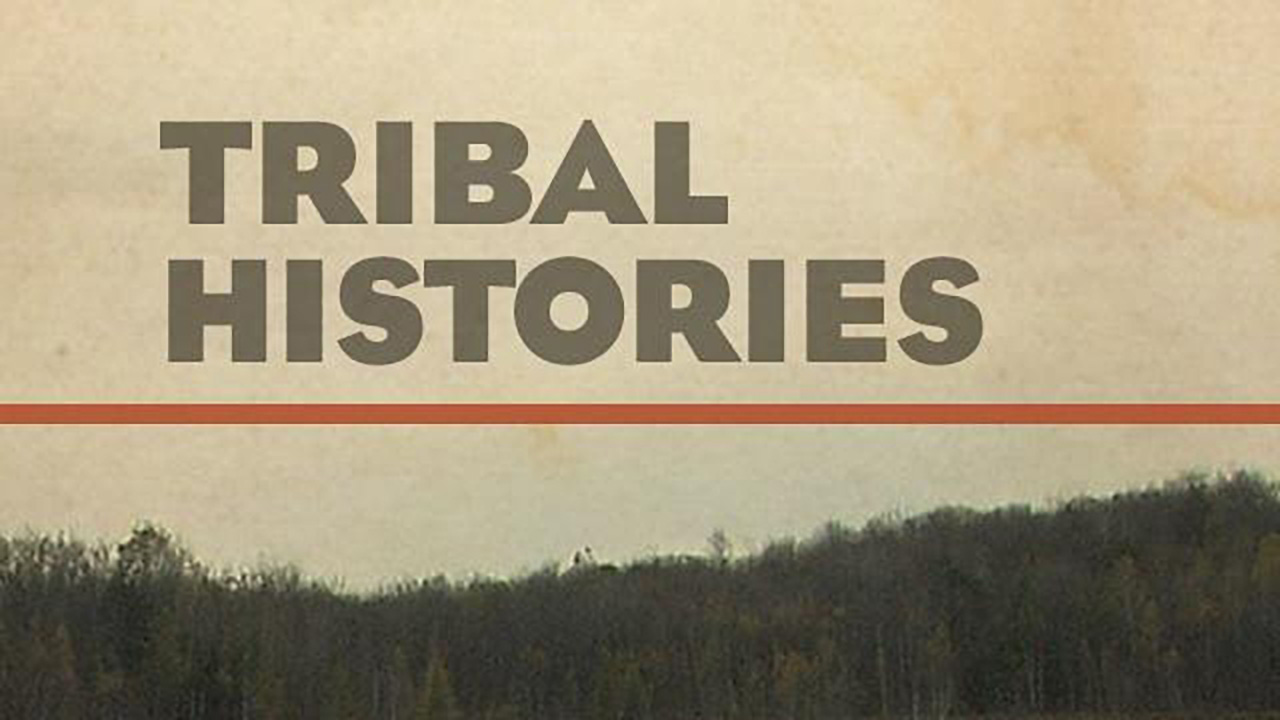
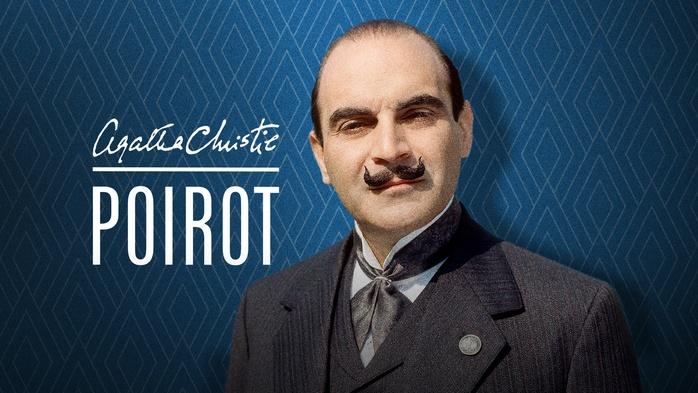

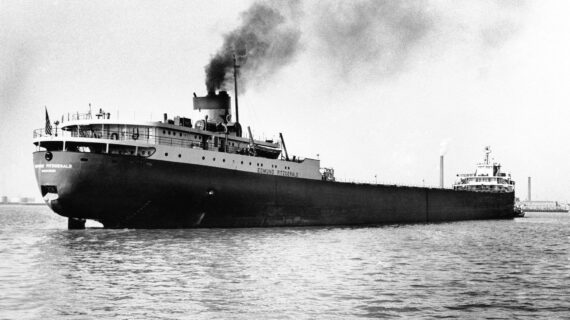


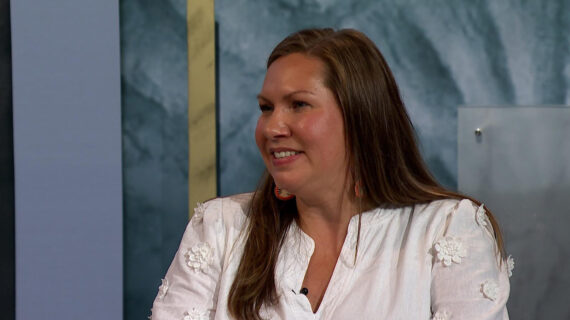
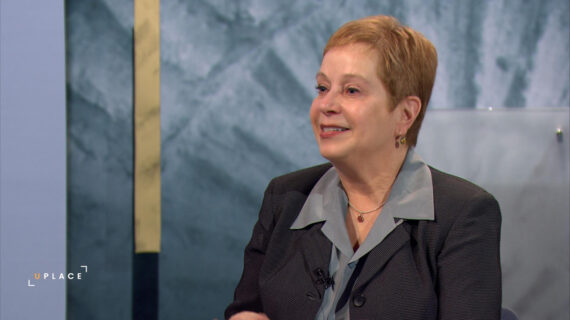
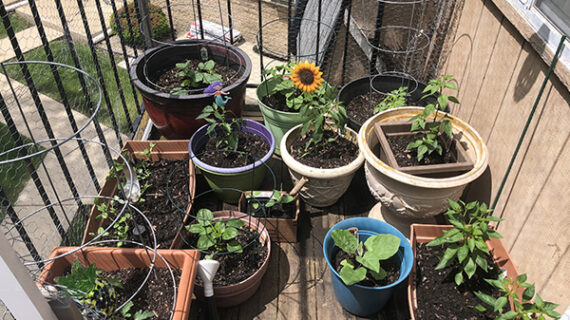
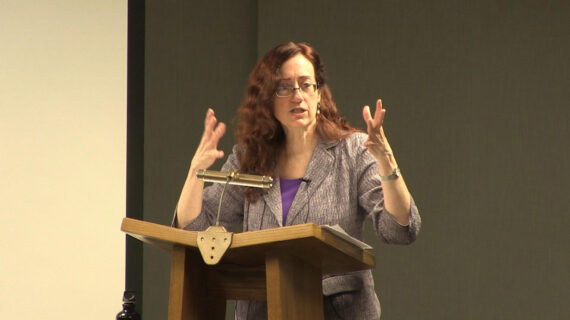
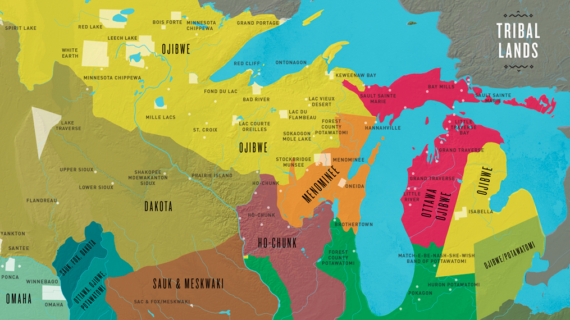
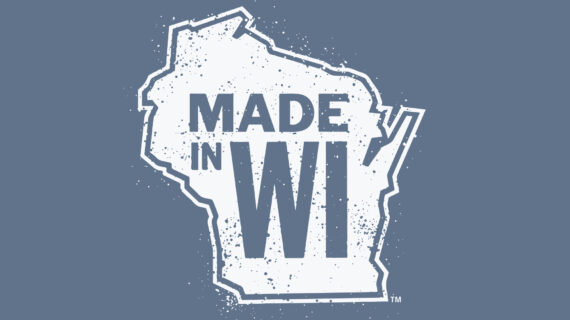

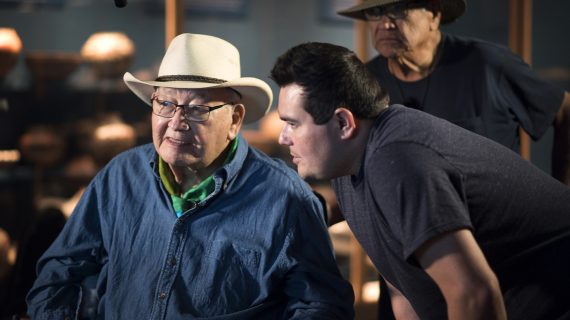


Follow Us